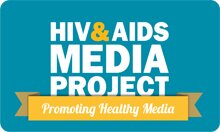HIV: The Details
HIV Transmission
HIV is transmitted through body fluids such as blood, semen, vaginal fluid, breast milk and other fluids containing blood.
The virus is most commonly transmitted in the following ways:
- having unprotected (not using condoms) vaginal or anal sex with an infected person (unprotected anal sex carries a higher risk of HIV infection, especially for the receptive (bottom) partner)
- through pregnancy, labour or breastfeeding from HIV-infected mother to child if the mother is not on treatment
- infected blood received during blood transfusion where either the blood has not been screened for the virus, or unsterilised needles have been used
- sharing needles for intravenous drug use with an infected person
The virus can also be transmitted via oral sex as body fluids can be transferred through cuts or sores around or in the mouth or throat. But the risk of HIV-transmission through oral sex is extremely low.
No evidence has been found that the virus can be transmitted through kissing (unless intraoral bleeding occurs), saliva, tears, sweat, or via insects (such as mosquitoes-Click here for more on this from our Myths & Misconceptions section).
HIV Progression and Symptoms
The HI virus enters the blood and attacks the body's immune system, This is why HIV is classed as a retrovirus (a virus which uses the body's own cells to reproduce itself). the cells that HIV takes over are called T-helper cells.
These cells are vital because they co-ordinate the immune system's response to infections.
The HI virus gains entry to the T-helper cell by attaching itself to the CD4 protein on the surface of the cell. Once the HIV has gained entry, it takes over the cell and replicates, seeking new T-helper cells to infect. The infected cell are destroyed through the process.

The HIV replication cycle: The virus that causes AIDS is shown budding out of a human immune cell, which the virus infects and uses to replicate. Visit the National Institute for Allergy and Infectious Diseases to learn more.
The body's natural response to an infection is to fight infected cells and replace the cells that have been lost. This response encourages the virus to reproduce itself. This is a gradual process that eventually damages the body's immune system and leaves the body vulnerable to infections and other diseases.
The time it takes to do this varies from person to person, but averages at about nine years.
During this time the HIV-positive person may experience no symptoms this is called the latency period.
The normal range for CD4+T cells in a healthy person is 800-1200 cells per cubic millilitre of blood. When an HIV infected person's CD4+ T cell count falls below 200, he or she becomes increasingly vulnerable to opportunistic infections.
In a person with a healthy immune system these infections would not normally be life-threatening but to an HIV-infected person they could be fatal.
Without treatment, the viral load, which refers to the relative amount of free virus in the blood plasma, will increase to the point where the body can no longer fight it.
A CD4 of below 350 indicates low immunity and in SA the patient can now be entered in the government ART programme
Testing for HIV
Testing for HIV is recognised as an important part of both prevention and treatment. There are a variety of tests which can detect and monitor HIV:
Rapid HIV tests
These tests are the standard tests used at HIV counseling and testing (HCT) facilities. Rapid tests look similar to home pregnancy test kits and work in much the same way. As their name suggests, test results are available immediately.
Enzyme-linked immunosorbent assay (ELISA) test
If the result of the rapid test is positive for HIV a laboratory test like the Enzyme-linked immunosorbent assay (ELISA) test is performed to double-check.
Both the ELISA and rapid HIV tests detect HIV antibodies. But HIV antibodies take time to appear in the body after initial infection (3 to 6 months). So if a person has acquired HIV recently a rapid test or ELISA test might not detect it. This early phase where HIV antibodies have yet to appear in the system is called the window period. It is one of the main reasons why people are encouraged to come back and test again in a few months.
Polymerase chain reaction (PCR) tests
PCR tests are less likely to be ‘duped’ by the window period because they do not test for HIV antibodies but for the HI virus itself. These viral load tests are most commonly used to monitor HIV progression in HIV-positive people or test for HIV in newborns who might have their mother's HIV antibodies in their system but not have the virus itself.
CD4 count
CD4 count measures the amount of CD4 cells in a person’s system. CD4 cells are the immune system ‘soldier’ cells which HIV destroys. These tests help to determine the state of the immune system of persons living with HIV.
The HIV family tree
 Image courtesy of Avert.org
Image courtesy of Avert.org
There are two different types of HIV: HIV-1 and HIV-2. Globally, the most predominant of the two is HIV-1.HIV-1 is subdivided into groups or strains - M, O, N & P. HIV-1, group M accounts for 90 percent of HIV infections internationally.
Group M is further divided into multiple sub-types or clades: A,B,C,D,F,G,H,J,K and there are also combinations of these subtypes known as circulating recombinant forms (CRFs). Each of these subtypes roughly corresponds to a geographical region, for example subtype C is most common in sub-Saharan Africa.
Different types, strains and subtypes of HIV differ in their effects and require different treatment. While there are many similarities between HIV-1 and HIV-2 (e.g. both are transmitted in the same way, both are associated with similar opportunistic infections and AIDS), in persons infected with HIV-2, immunodeficiency develops more slowly and the virus is less infectious.
Page Last updated: 19 September 2011







